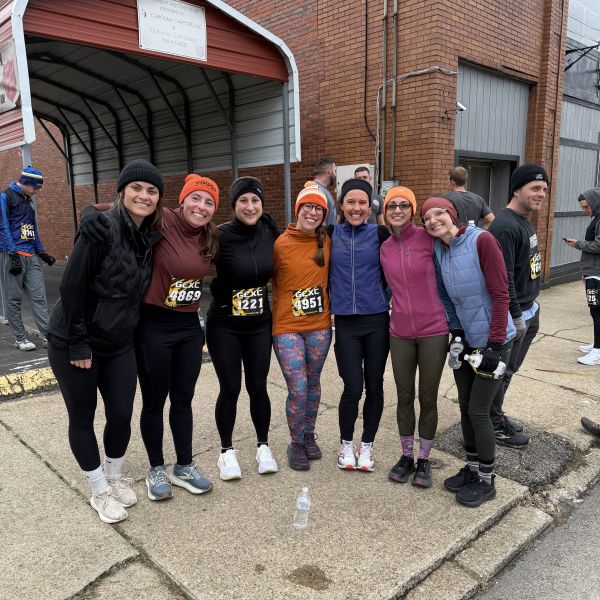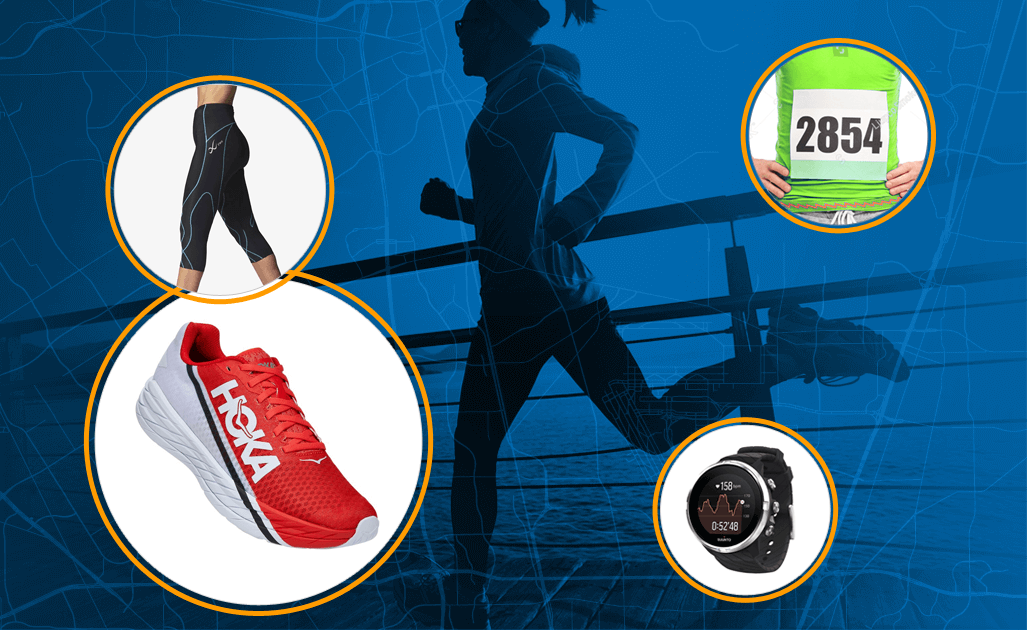Having appropriate running nutrition is critical to safely and enjoyably reach your goals. Sports nutrition is a specialty on its own, but as a lay runner, I can share how my experience with [im]proper nutrition and running hydration has impacted my practice and my gear choices.
I'm training for my first half marathon on Seattle's Burke-Gilman Trail when I notice my body mechanics shifting. This is familiar. This is what it feels like to be almost there. My breath cadence changes from legato to staccato and my legs feel ready to sprint and ready to stop at the same time. Just another 2 miles to go on top of the 9 I've already traveled, and I can see everything in front of me waiting to be passed, luring me onward to finish the run.
Time to calm myself.
I take in some breaths, reminding myself that it is not yet the time to sprint with two more miles to go. I need to maintain the steady pace that has gotten me this far. But I can't shake this sudden onset of what blurs the line between excitement and anxiety... or is it panic?
What I initially thought was the "finish line jitters," I began to realize was the dark, fuzzy tunnel that precedes loss of consciousness. I needed to sit down. But what about my timed pace? "Sit down," I insisted to that stubborn, dehydrated mind of mine.
This run was the first time I trained for a half marathon. And although I am typically a prepared hiker, biker, and general outdoors enthusiast, I had not yet come around to the idea of drinking water on long runs. My generally good sense of daily hydration had always worked to my favor previously, and I didn't like the idea of water sloshing around in my belly when pounding out miles on the pavement.
Maybe it was the fact that this was the longest I had ever run before, or perhaps it had something to do with what I ate or drank earlier in the day or week? What I did know is that I needed to make my way home without giving in to the temptation of scooping up a palmful of Seattle's dirty Lake Union water to drink. But, most importantly, I needed to make sure this didn't happen again.
Nutrition and hydration for runners vary greatly from person to person, both based on physiology and personal preferences. Some like to run on an empty stomach, some after complex carbs, and many in between.
As a runner, your intake choices will likely depend on how far or for how long you'll be running and what your performance goals are. However, no matter the individual circumstance, it is vital to safely achieve your goals without hitting a wall or causing excessive fatigue or injury.
There’s plentiful information available about techniques for carb-loading and food choices, but I can only share what has worked for me. I am a middle-distance runner with generally good fitness. I am not always training for a race, but I use running as an accessible exercise that helps me stay in shape and provides a trusty space for self-reflection.
I want to enjoy the run, and I don't want anything that hinders my distance or stamina besides my own willingness to keep going or the pressures put on by my schedule. I'm not a gear junkie, and I like to be light and hands-free while running. All that being said, you can understand how minimizing what I take with me while maintaining what my body needs to finish strong is a delicate balance.
A good, solid run starts before you hit the road or the trail. This is where running nutrition (and running hydration) come in. The intent of nutrition is to provide your body with the right fuels at the right time. I'm sure you've heard of carb-loading, but the concept is a bit more advanced than just sitting down to a bowl of pasta the night before a run.
When you run, your body will use both glycogen and fat to fuel your muscles. Glycogen is much more efficient to use, whereas fat requires your body to work harder to convert it to usable fuel.
With that information in mind, you want to have "stores" of accessible glycogen available for your body to draw from, and carbs are stored as glycogen in your muscles and liver. Starting to make sense now?
Carbs = Glycogen = Energy
If you happen to run out of glycogen, you will slow down because your body now has to turn fat into energy. To avoid this, you will want to fill your muscles up with as much glycogen as possible, "top off the tank," as it were. So those hearty carb-heavy meals well before your run or the night before do have a scientific backing.
However, it should be noted that you don't necessarily need to carb-load before a shorter run, say 3-6 miles, because you likely have enough fuel in your muscles already to get you through that distance. It's when you'll be running for more than 90 minutes that you really want to start thinking about your fueling strategy.
Most of my runs are either in the evening after work or during the workday on my treasured "lunch runs." Because I am effectively swapping meal time for exertion time, it is essential that my running nutrition has been considered from earlier in the day all the way through the run.
For both evening and lunch runs – where I'm feeling a little hungry for a meal but certainly don't want to have to wait for it to digest – I have found that a spoonful of peanut butter works well. Peanut butter provides carbs and energy, along with some protein that helps to fend off the feeling of hunger.
This "snack" works well for runs up to 6 miles for me, but everyone's running nutrition needs and preferences are different, so you may find yourself needing a little more fuel to go that far. A great modification to the simple spoonful of peanut butter would be a peanut butter and banana sandwich.
What you get in this combination is a few additional carbs from the bread, plus potassium from the banana. Potassium helps prevent muscle cramps, and the low-fiber banana is an excellent option for pre-run nutrition to help feel full, not heavy, and avoid stomach upset caused by too much fiber.
During longer runs, we often need some mid-run nutrition in addition to a pre-run snack (and potentially carb-heavy meals early in the day or the day before). I have found the tastiest and most effective mid-run fuel to be energy chews.
They are easy to consume on the go and are much more palatable than Gu or other gel-based options. These brilliant, tasty morsels offer simple carbs for immediate energy, complex carbs for lasting energy, sodium for hydration, and amino acids for muscle recovery. Plus, they are small and can easily be stashed away on your person while you run.
I also like to hydrate during the day as much as possible before my run, and I'll have a glass of water about 30 minutes before I head out, with one final sip or two before as I walk out the door.
Even after my near black-out all those years ago, I still don't tend to bring water with me. Instead, I tend to plan my route around drinking fountain locations – a luxury of running primarily in developed areas.
However, my running compatriots who do bring water swear by handheld water bottles. These strap around your hand so you don't need to be gripping the water bottle the whole time, which can lead to tension in your shoulders (remember, you want to keep your fingers and palms relaxed and low for a long run). Many of the handheld options have additional capacity for storing a small amount of energy, such as gels or chews.
Personally, I'm not too fond of a running hydration belt for the same reason that I don't drink much water along the way: the sloshing. A running hydration vest also fits into this category, in my opinion. For me, running is a mental game, and I find it challenging to stay in the zone when I hear or feel the sloshing.
I do, however, use race belts. Similar to the handheld water bottles, these can stash a little bit of extra fuel, plus phone, keys, or other small items in the case that you don't have pockets in your clothing. The belts are constructed to keep your goodies snug against you, eliminating the annoying bouncing sensation.
My biggest takeaway from that unsettling near-blackout run years ago is that not all runs are created equal; some require more preparation while others require less. As is the case in all physical endeavors, running nutrition and hydration begins well before the actual day of exertion.
Still, with a small amount of planning, you can ensure that your mind and body are prepared to carry you through whatever goals you've set for yourself. Make sure to refuel after your run too with a balanced snack or recovery drink, to bounce back faster for the next go around.
Now grab your favorite snack and get out for a run!

Login to your account to leave a comment.





We Want to Give it to You!
